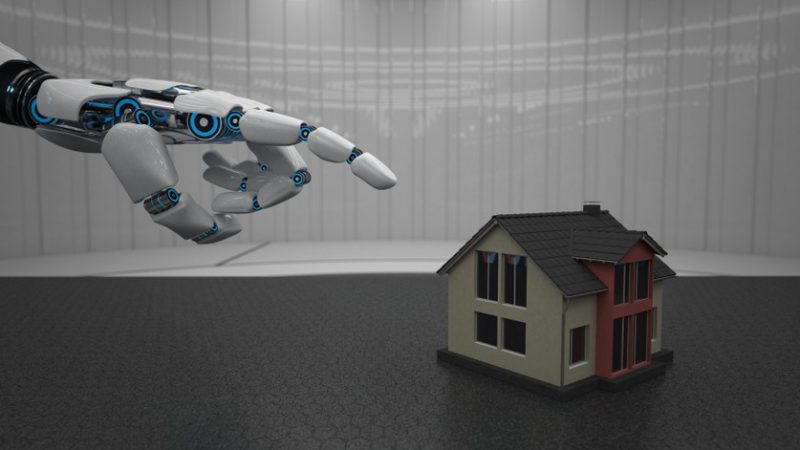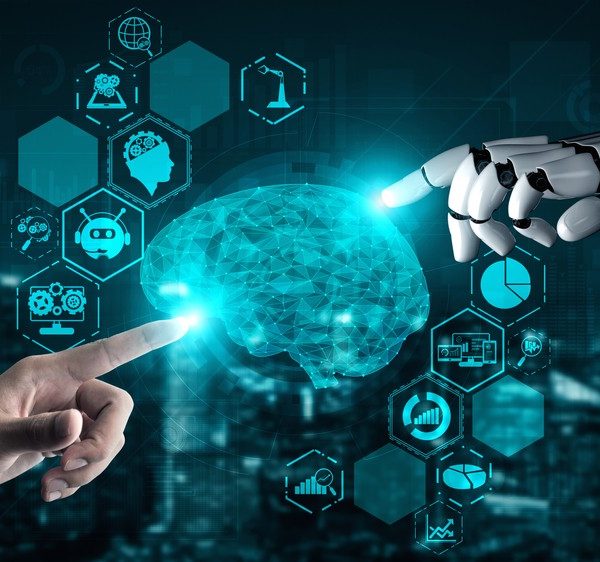
AI in Architecture: How is it Changing the Industry?
The integration of Artificial Intelligence (AI) and architecture is poised to tackle various challenges related to housing, urban living, and cities. Presently, more than half of the world’s population resides in urban areas, with estimates suggesting this will rise to 68% by 2050, causing the formation of numerous megacities worldwide.
Through the use of AI, architecture will usher in a new era of intelligent homes that are data-driven and complex living spaces. Innovative design concepts such as parametric, kinetic, and non-cuboid volumes will become commonplace. Additionally, AI will play a vital role in optimizing space planning, design, construction, project management, waste reduction, and the integration of sustainable strategies. It will also enable homes to contribute to the creation of smart cities that are efficient.
This transformative change demands large-scale infrastructure, innovation, and inclusivity. Currently, AI and architecture have captured the attention of experts, and the integration of AI has led to innovative methods of problem-solving across various fields, including automation, medicine, manufacturing, and IT. The integration of AI in these industries has proved invaluable, enabling them to develop inventive solutions to complex challenges.
Artificial Intelligence in Architecture: Revolutionizing the Future of Building Design
Architecture is not just about aesthetics, but also about functionality, safety, and sustainability. The process of designing a building involves a complex mix of art and science, and with the advent of artificial intelligence (AI), the industry is undergoing a radical transformation. Below we’ll explore how AI is revolutionizing the future of building design and how it can benefit architects and the construction industry as a whole.
Streamlining the Decision-making Process with AI
The process of designing a building involves a lot of decision-making. From choosing the right materials to creating a layout that maximizes space and functionality, architects have to consider a lot of factors. AI can help streamline this process by analyzing vast amounts of data and providing insights that can inform the decision-making process.
For instance, AI can analyze building codes, zoning regulations, and environmental impact assessments to ensure that the building is safe and environmentally sustainable. It can also predict the performance of different building materials and systems, allowing architects to make more informed choices.
Automation in Architectural Design
One of the most significant impacts of AI on architecture is in the area of design automation. Design automation refers to the use of algorithms and machine learning to automate parts of the design process. This means that architects can spend more time on creative tasks and less time on mundane, repetitive tasks.
AI can analyze data from previous projects to generate design options that meet specific criteria. This can help architects optimize the layout of a building, taking into account factors such as accessibility, natural light, and energy efficiency.
Improving Collaboration and Coordination
Another area where AI can have a significant impact is in improving collaboration and coordination between different teams. Building design involves multiple stakeholders, including architects, engineers, contractors, and clients. AI can facilitate communication and collaboration between these teams by providing a common platform for sharing information and data.
For instance, AI can help architects and engineers collaborate more effectively by identifying potential clashes in design elements, such as conflicting structural or mechanical systems. This can help prevent costly mistakes and delays during the construction phase.
The Future of AI in Architecture
AI is still in its early stages in the field of architecture, but its potential is vast. As the technology continues to evolve, we can expect to see more advanced applications of AI in building design and construction.
For instance, AI could be used to optimize the entire building lifecycle, from design to maintenance and operation. It could also be used to develop more efficient construction methods, reducing waste and minimizing the environmental impact of the construction industry.
Smarter Design Systems: How AI is Revolutionizing Architecture
In the ever-evolving world of technology, AI has become a powerful tool for many industries. Architecture is no exception. With the help of AI, architects can now design smarter and more efficient buildings and cities.
Collecting and Analyzing Data for Better Design
AI can collect and analyze massive sets of data to make predictions about traffic levels, patterns, and more. This allows architects to design buildings and cities that are better suited to the needs of their users. By using AI to collect data, architects can get a clearer picture of how people interact with their environment, and design buildings and public spaces that meet those needs.
Streamlining Operations and Improving Efficiency
AI can also be used to streamline operations and improve efficiency. By automating repetitive tasks, architects can spend more time on creative and innovative design work. This not only saves time and money, but it also allows architects to focus on what they do best: designing buildings that meet the needs of their clients.
Personalized Design for Every Client
One of the most exciting things about AI in architecture is the potential for personalized design. With the help of AI, architects can create modular and robust design systems that can be customized for each individual client. This allows architects to create unique designs that are tailored to the specific needs of each client.
Shortening Building Time and Reducing Costs
AI can also help architects save time and money by providing accurate cost estimates and shortening building time. By automating many of the design and construction processes, AI can reduce the time and resources needed to complete a project. This not only saves architects time and money, but it also allows them to take on more projects and meet tighter deadlines.
Automated Building Design: How AI is Revolutionizing Architecture
The use of artificial intelligence (AI) is transforming the building design process. With the help of AI algorithms, architects and builders can make more informed decisions and streamline their workflow. In this article, we’ll explore the different ways AI is being used to improve building design, maintenance, and sustainability.
Predictive Maintenance: Reducing Downtime and Improving Building Performance
One of the most significant benefits of using AI in building design is predictive maintenance. By analyzing data from sensors and other sources, AI algorithms can predict when equipment is likely to fail, allowing building maintenance teams to address issues before they become problems. This reduces downtime and improves building performance, leading to significant cost savings over time.
Enhanced Sustainability: Reducing Energy Consumption and Carbon Footprint
Another way AI is revolutionizing building design is through enhanced sustainability. By optimizing building performance, such as reducing energy consumption and indoor air quality, AI algorithms can help to reduce the carbon footprint of buildings. This is critical in the face of climate change and increasing pressure to build more sustainable structures.
Virtual Reality Design: Exploring Design Options in a Virtual Environment
AI algorithms are also being used to create virtual reality simulations of buildings. This allows architects and builders to explore design options and make informed decisions in a virtual environment. This technology is particularly useful when designing complex structures, as it allows for greater collaboration and visualization.
Increased Energy Efficiency: Optimizing Building Performance
By optimizing building performance, AI algorithms can help to create more energy-efficient buildings. This can be achieved through a range of measures, such as the optimization of heating and cooling systems, the use of smart lighting, and the reduction of waste. These measures not only reduce energy consumption but also help to create a more comfortable and healthier indoor environment.
Automated Building Maintenance: Streamlining the Maintenance Process
AI algorithms can also be used to automate building maintenance tasks, such as monitoring air quality and detecting equipment failures. This frees up time for architects and builders to focus on other aspects of the design process and can reduce downtime and improve building performance. By automating routine maintenance tasks, building teams can ensure that their structures are running efficiently and effectively.
Reduced Construction Costs: Identifying Cost-Saving Opportunities
Finally, AI algorithms can be used to identify areas where construction costs can be reduced. This can be achieved through the optimization of materials and construction methods, such as the use of 3D printing or other advanced manufacturing techniques. By identifying cost-saving opportunities, building teams can reduce the overall cost of construction while still maintaining high standards of quality and safety.
Using AI to Reduce Concept-to-Build Delays in Architecture
Artificial intelligence (AI) has the potential to transform the architecture industry by reducing the time it takes to move from concept to build. By using AI algorithms, architects can quickly generate and evaluate various design options, leading to more efficient decision-making and a faster path to finalizing a design.
Generative Design Software
One way AI can be utilized in architecture is through the use of generative design software. This software uses algorithms to create a range of design options based on specified input parameters such as building size and location. Architects can then quickly evaluate the generated designs and choose the best option that suits their needs.
Building Information Modeling (BIM) Software
Another way AI can be applied in architecture is through the use of BIM software. BIM software allows architects to create digital models of their designs, which can be analyzed using AI algorithms to identify potential issues and suggest improvements. This can help architects catch and resolve problems early in the design process, reducing delays and costs associated with making changes later on.
Optimizing Energy Efficiency
AI can also be used to optimize the energy efficiency of buildings. By using machine learning and simulation, architects can assess different design options and identify the best solution to minimize energy consumption. This results in a more sustainable and environmentally-friendly design.
Impact of Text-to-Image AI Software on Architecture
Text-to-image software, also known as image generation software, has the potential to revolutionize the field of architecture and concept designing. This technology enables architects to quickly and easily create visual representations of their ideas without the need for extensive manual effort in modeling or rendering. It is a new and innovative technology that can help architects explore concepts more efficiently.
Creating Realistic 3D Images
This innovative technology allows architects to convert written descriptions of a space into realistic 3D images, giving them the ability to visualize and experiment with various design options in a matter of minutes. It helps in enhancing the level of creativity and experimentation in interior design by allowing designers to try out different options and see how they look in a realistic 3D environment.
Benefits for Clients
Text-to-image software can also be a valuable tool for clients, as it allows them to see the designer’s vision for the space in a realistic and detailed way. This helps them make informed decisions about design choices, ultimately leading to a more successful outcome.
Read Also:
Conclusion
The intersection of artificial intelligence and architecture presents an opportunity for progress and advancement towards a brighter future. In my opinion, this fusion stimulates creativity and originality, unlocking a realm of possibilities previously unexplored. By leveraging AI, architects can streamline their workflow and redirect their focus towards elevating their design concepts. This is precisely why I believe that AI should be viewed as a tool for empowerment within the architectural profession.























